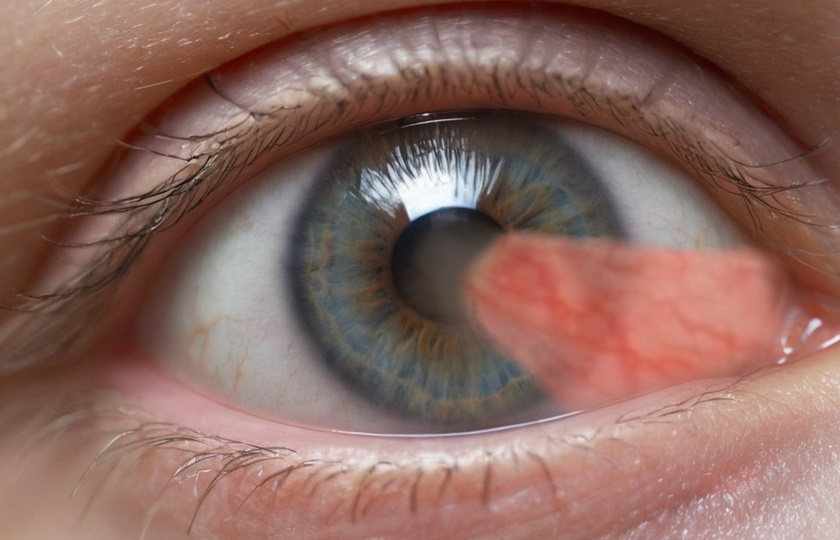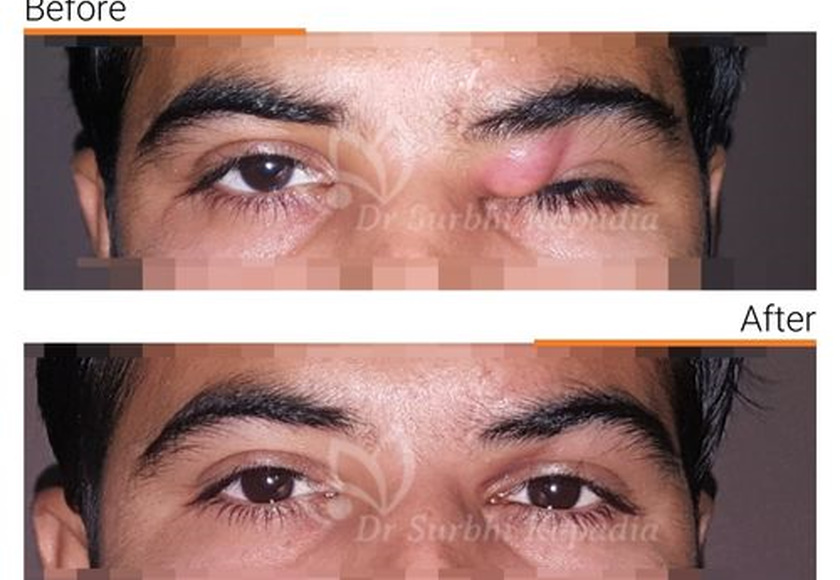|
Getting your Trinity Audio player ready...
|
In the realm of eye health, certain conditions often go unnoticed until they start impacting our daily lives. One such condition is Pterygium, commonly known as “Farmer’s Eye.” Despite its benign nature, pterygium can lead to discomfort and, in severe cases, vision impairment. As we embark on a journey to understand this eye condition, Dr. Surbhi Kapadia, a leading eye specialist in Vadodara, offers her insights. This blog aims to shed light on what pterygium is, its causes, symptoms, and the advanced treatment options available, including the meticulous approach to pterygium surgery. Dr. Kapadia’s expertise in this field stands as a beacon of hope for those seeking comprehensive eye care.
What is Pterygium?
Pterygium, often termed ‘Surfer’s Eye,’ is a condition where a benign growth develops on the conjunctiva, the clear tissue covering the white part of the eye, and can extend onto the cornea. This growth is typically pink and fleshy, resembling a wing, hence the name (from the Greek ‘pterygion’ for wing).
What Causes Pterygium in the Eye?
Understanding the causes of pterygium is crucial in both prevention and treatment. This ocular condition, while benign, can lead to discomfort and vision impairment if left unaddressed. Here’s a closer look at the various factors that contribute to the development of pterygium:
Ultraviolet (UV) Radiation Exposure:
Primary Factor: Prolonged exposure to UV radiation from the sun is considered the most significant risk factor for pterygium. This is particularly common in geographic regions closer to the equator where sunlight intensity is higher.
Outdoor Activities: Individuals who spend extensive time outdoors, such as farmers, fishermen, sports persons and surfers, are at a higher risk due to increased sun exposure.
Environmental Irritants:
Wind and Dust: Chronic exposure to wind and dust can irritate the conjunctiva, leading to the growth of pterygium. This is often seen in people living in arid or windy climates.
Occupational Hazards: Jobs that involve exposure to these elements, like construction or landscaping, can increase the likelihood of developing pterygium.
Dry Eye Condition:
Conjunctival Irritation: A dry eye condition can exacerbate the irritation of the conjunctiva, contributing to the growth of pterygium.
Lack of Tear Production: Inadequate tear production or poor quality of tears can lead to dry and irritated eyes, creating an environment conducive to pterygium development.
Genetic Predisposition:
Hereditary Factors: There is evidence to suggest that genetics may play a role in the susceptibility to pterygium. Individuals with a family history of this condition might be more prone to developing it.
Lifestyle Factors:
Outdoor Sports and Recreation: Engaging in outdoor sports and recreational activities without adequate eye protection can increase the risk.
Lack of Protective Eyewear: Not wearing sunglasses or hats that shield the eyes from UV rays can contribute to the development of pterygium.
Age and Gender:
Prevalence in Certain Demographics: Pterygium is more commonly observed in adults between 20 and 40 years of age and tends to be more prevalent in men than in women, likely due to occupational and lifestyle factors.
Pterygium is primarily caused by external environmental factors, particularly UV radiation and irritants like wind and dust. Understanding these causes is pivotal for individuals, especially those in high-risk groups, to take preventive measures. Regular eye examinations and consultations with the best eye care specialists like Dr Surbhi Kapadia in Vadodara can help in the early detection and management of pterygium.
What are the Symptoms of Pterygium?
Pterygium symptoms can range from being purely cosmetic to affecting vision. Common symptoms include:
- Persistent redness and inflammation
- A feeling of grittiness or foreign body sensation in the eye
- Blurred vision (if the growth encroaches onto the cornea)
- Irritation and itchiness
How to Treat Pterygium?
Treating pterygium involves a range of approaches depending on its size, growth rate, and the symptoms it causes. Dr Surbhi Kapadia, known for her expertise in eye care, advocates for treatments that not only address the condition but also focus on the patient’s overall comfort and eye health. Here’s a detailed look at the treatment options for pterygium:
Conservative Management:
Lubricating Eye Drops and Ointments: For mild cases of pterygium that cause irritation or redness, lubricating eye drops or ointments are often prescribed. These help in alleviating dryness and provide relief from the gritty sensation.
Monitoring: Regular monitoring of the pterygium’s growth and symptoms is crucial. If the condition remains stable without progressing, continued observation may be recommended.
Medication for Inflammation:
Steroid Eye Drops: In cases where the pterygium causes significant inflammation, steroid eye drops may be used to reduce redness and swelling. However, these are generally used for a short duration due to potential side effects.
Surgical Intervention:
Indications for Surgery: Surgery is considered when pterygium progresses enough to threaten vision, induce astigmatism, or cause persistent discomfort and redness that doesn’t respond to conservative treatment.
The Surgical Procedure: Pterygium removal surgery, performed under local anesthesia, involves carefully excising the growth. Dr. Kapadia emphasizes the importance of precision and skill in this procedure to minimize recurrence.
Conjunctival Autograft: A key step in modern pterygium surgery is the use of a conjunctival autograft. This involves transplanting a small piece of the patient’s conjunctival tissue to the affected area, significantly reducing the chance of pterygium recurrence.
Tissue Adhesive in Surgery: Advanced techniques often involve using tissue adhesives instead of sutures to secure the graft, which can enhance patient comfort during recovery.
Post-Surgery Care
Follow-up Visits: Regular post-operative visits are essential to ensure proper healing and to monitor for any signs of recurrence.
Use of Medications Post-Surgery: Patients are usually prescribed anti-inflammatory and antibiotic eye drops to prevent infection and aid in the healing process.
Lifestyle Modifications and Protection
UV Protection: Wearing sunglasses that block UV rays is crucial, especially for patients who have had pterygium surgery, to prevent recurrence.
Avoiding Environmental Irritants: Protective eyewear to shield the eyes from dust and wind can also be beneficial, particularly in environments that contribute to the development of pterygium.
The treatment of pterygium is multifaceted, ranging from simple conservative measures to advanced surgical techniques. Dr Surbhi Kapadia’s is the best pterygium surgery specialist approach to treating this condition integrates cutting-edge surgical methods with a focus on patient-specific needs, ensuring the best outcomes for those affected by pterygium.
What are the Steps for Pterygium Surgery?
Pterygium surgery, known for its effectiveness in treating this condition, involves several critical steps:
Anaesthetic Application: To ensure patient comfort, a local anesthetic is applied.
Pterygium Removal: The growth is delicately excised.
Conjunctival Autograft: To prevent recurrence, a piece of the patient’s conjunctiva is grafted onto the site.
Securing the Graft: The graft is secured using sutures or tissue glue. The healing in case of sutureless pterygium surgery is quicker and smoother.
Aftercare Tips by Dr. Surbhi Kapadia
Post-operative care is crucial for a successful outcome. Dr. Kapadia, recognized as the best pterygium surgery doctor in Vadodara, recommends:
- Wearing UV-protective sunglasses outdoors
- Avoiding dusty or windy environments during recovery
- Diligently using prescribed eye drops to control inflammation and prevent infection
- Scheduling follow-up visits to monitor healing
Conclusion
Opting for pterygium surgery can vastly improve both the appearance and health of the eye. Undergoing this procedure with a skilled surgeon like Dr Surbhi Kapadia, renowned for the best pterygium surgery in Vadodara, ensures optimal care and outcomes. Her extensive experience and patient-centred approach make her a preferred choice for those seeking quality eye care.
For consultations and more information on pterygium surgery, contact Dr. Surbhi Kapadia at Aadicura Superspeciality Hospital, Vadodara.
![]()






